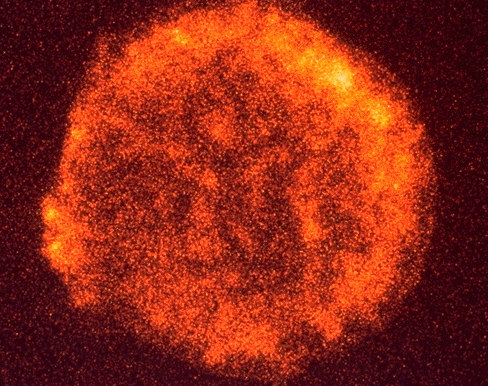
|
Explanation: How often do stars explode? By looking at external galaxies, astronomers can guess that these events, known as a supernovae, should occur about once every 30 years in a typical spiral galaxy like our MilkyWay. However, the obscuring gas and dust in the disk of our galaxy probably prevents us from seeing many galactic supernovae -- making observations of these events in our own galaxy relatively rare. In fact, in 1572, the revered Danish astronomer, Tycho Brahe, witnessed one of the last to be seen. The remnant of this explosion is still visible today as the shockwave it generated continues to expand into the gas and dust between the stars.Above is an image of the X-rays emitted by this shockwave made by a telescope onboard the ROSAT spacecraft. The nebula is known as Tycho's Supernova Remnant.
|
January February March April May June July August September October November December |
| ||||||||||||||||||||||||||||||||||||||||||||||||
NASA Web Site Statements, Warnings, and Disclaimers
NASA Official: Jay Norris. Specific rights apply.
A service of: LHEA at NASA / GSFC
& Michigan Tech. U.
Based on Astronomy Picture
Of the Day
Publications with keywords: nebula - molecular cloud - supernova remnant - supernova
Publications with words: nebula - molecular cloud - supernova remnant - supernova
See also:
- APOD: 2025 October 1 B NGC 6960: The Witchs Broom Nebula
- APOD: 2025 July 31 B Supernova 2025rbs in NGC 7331
- APOD: 2025 July 10 B Lynds Dark Nebula 1251
- APOD: 2025 June 9 B Between Scylla and Charybdis: A Double Cosmic Discovery
- APOD: 2025 March 18 B LDN 1235: The Shark Nebula
- The Protostars within Lynds 483
- Stardust in the Perseus Molecular Cloud
